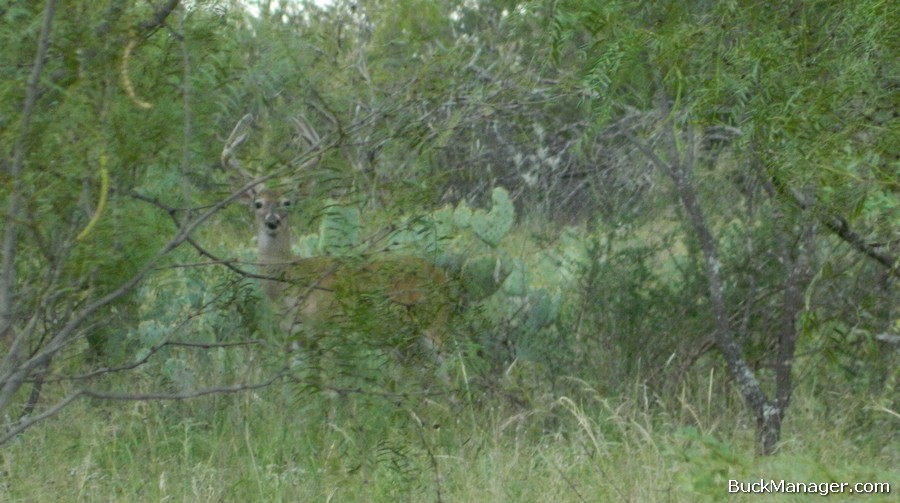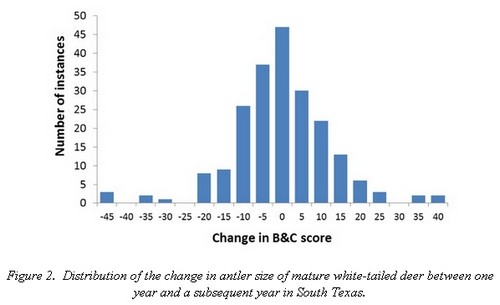It’s never too early in the year to start talking about bucks and antler growth for the upcoming hunting season. I have high expectations for some older bucks that should look very nice this fall, especially given the timely late-Spring rains that just soaked the area. That translates directly into additional high-protein forbs, new growth on browse plants and increased antler growth, not to mention better habitat conditions for hiding fawns. Things are looking up!
Today, we’re discussing antlers. We can still refer to them as “horns” while at deer camp.
Specifically, we’re looking at changes in antler growth in bucks, mature bucks. Every deer hunter has stories or at least game camera photos of some odd-antlered deer. And let’s face it, hunters enjoy talking about those deer as well as all the other wild things we’ve witnessed while out hunting white-tailed deer. There are an untold number of events that happen in nature that we never had seen had we not been sitting nearly motionless and scentless for hours on end. Ok, let’s focus.

When it comes to managing deer it’s really all about population (herd) management on a given property, although certain individuals (bucks) can be exceptionally poor or amazingly great. It’s also the outliers that we tend to remember, the ones way out on either end of the bell curve. Some recent and extensive research on antler development using known-aged bucks seemed to confirm some of the things we knew about whitetail bucks and antlers, but they also found some other interesting data about changes in marked, free-ranging bucks from year to year.
Mature Bucks and Changes in Antler Size
The general consensus among seasoned hunters, deer biologist and academic research suggest that most white-tailed bucks reach peak antler growth around 5 to 6 1/2 years of age. This is definitely the case for the overwhelming majority of bucks, so it definitely has management implications. That said, a few do some really whacky stuff:
Source: “Using data from 170 bucks captured more than once while they were mature, I constructed a distribution of the magnitude of change in antler size for bucks 5 to 8 years of age. The figure below shows the distribution of 211 instances in which antler-size change was measured in subsequent years.
For example, there were 47 bucks that gained 0-5 inches in antler size from one age to the next and there were 37 bucks that lost -5 to -0.1 inches. These data come from the South Texas Buck Capture project with captured bucks on 5 ranches in Webb and Kleberg Counties over a 10-year period.”
“From these data, it is clear that successive antler sets of individual mature deer vary by less than 20 inches in 90% of the instances. However, in 3% of instances, antler size changed by more than 40 inches. We will use 40 inches as our criterion to define an outlier in antler-size change of mature bucks.”
More on Antler Growth in Deer
Male white-tailed deer grow and shed antlers on an annual basis, typically starting a new set in late spring. Antler growth is regulated by hormones, which are controlled by day length (photoperiod). Throughout late spring and summer, antlers are filled with a rich blood supply and are covered with a hair-like membrane referred to as velvet. During this stage, antlers are quite vulnerable to injury, which many times result in deformed antlers.
Actively-growing antlers are high in water and low in dry matter content (phosphorus and calcium). Late in the summer, antler development slows and the antlers begin to mineralize (harden). When growth is finally complete, blood flow to the antlers stops completely and soon after all of the velvet is rubbed off (typically within a single day). Hunters often see a by-product of this effort, as rubs will be found on pliable saplings up to small trees that are 7-8 inches in diameter. This result is a buck with a brand-new set of hardened antlers.
Following the whitetail breeding season, de-mineralization occurs at the base of the antlers in healthy bucks and that causes them to shed their antlers. Early antler shedding can be attributed to deer that are not completely healthy, for whatever reason. Immediately following antler drop the entire development process starts over.
